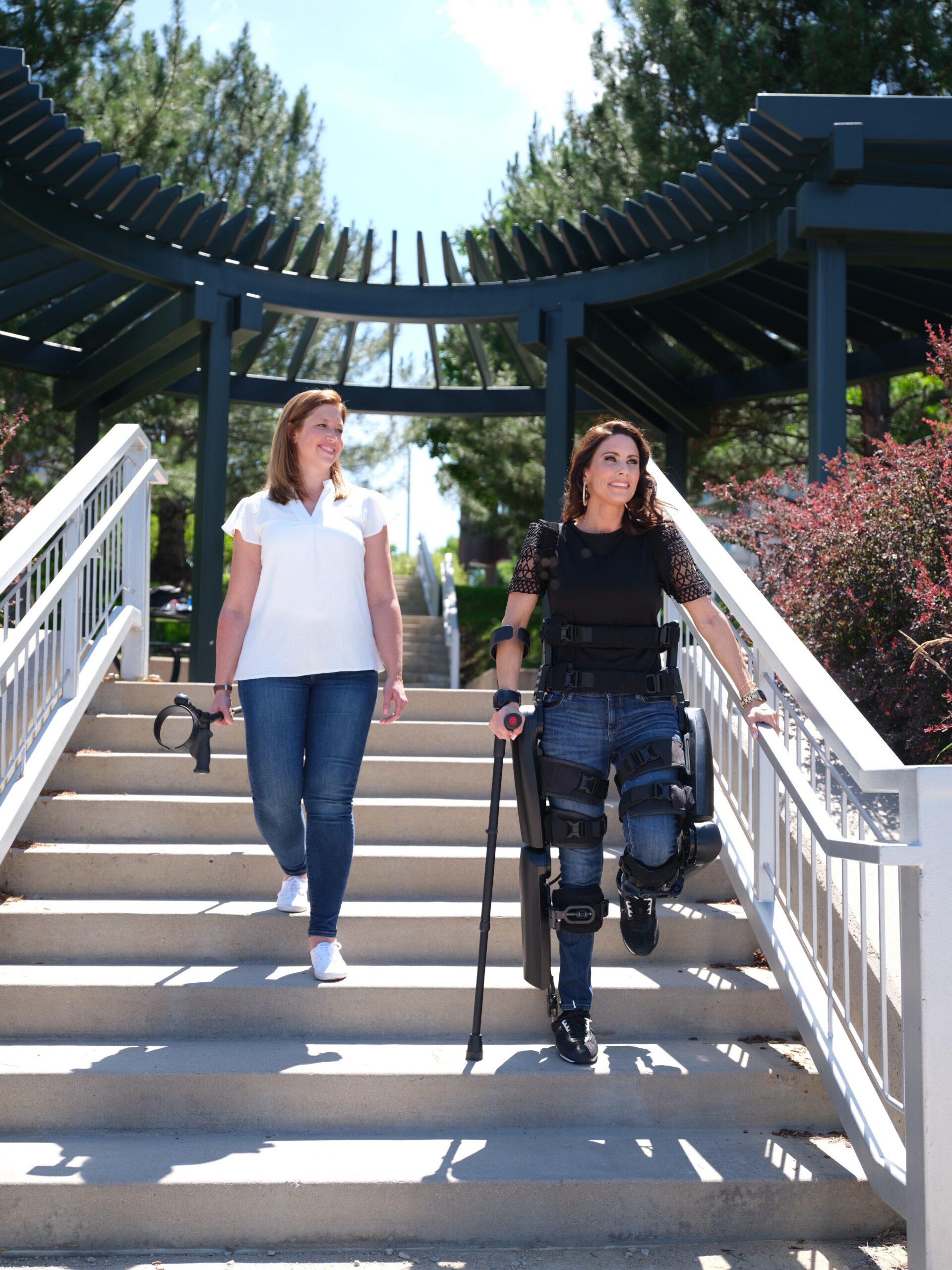Functional Electrical Stimulation
Functional electrical stimulation (FES) applies small electrical pulses to paralyzed muscles to restore or improve their function.
FES is commonly used for exercise, but also to assist with breathing, grasping, transferring, standing and walking. It can also lead to improved bladder and bowel function. There’s even evidence that FES may reduce the frequency of pressure sores and urinary tract infections.
The excitement around FES technology really sparked in 1983 when Nan Davis, a paraplegic student at Wright State University, got out of her wheelchair and “walked” to get her diploma. She was powered by an FES system and inspired a TV movie called “First Steps.”
The Wright State technology soon emerged commercially in the form of a stationary bicycle called the Regys in which users pedal the bike using FES-stimulated leg muscles. Researchers soon noted that this form of FES provides real aerobic exercise in people who otherwise can’t move on their own, boosting heart and lung function, improving strength and circulation, building muscle mass, even in people with high quadriplegia.
There are some risks associated with FES. Fracture of leg bones is possible due to loss of bone mineral density. Also, FES can trigger autonomic dysreflexia in upper-level injuries. People with severe spasticity, contractures, or osteoporosis are not good candidates.
FES Bikes
FES bikes allow people with little or no voluntary leg movement to pedal a stationary leg-cycle called an ergometer. Computer generated, low-level electrical pulses are transmitted through surface electrodes to the leg muscles. This causes coordinated contractions and the pedaling motion.
The first step is to choose a bike that is mechanically sound. All the electronics are upgradeable from the manufacturers. Each bike has a program cartridge set up for the specific needs of each rider, including run times, resistance, etc. A doctor’s prescription is needed for FES cycling and the cartridge. For safety reasons, it’s not recommended that FES bike riders use another’s cartridge.
Here in the U.S., there are a couple of companies currently producing the bikes. Therapeutic Alliances, Inc., one of the oldest manufacturers, makes the Ergys 3.
Restorative Therapies RT300 cycle is affordable, adaptable, easy-to-use and backed by over a decade of experience and successful results. T300 cycle is used
The MyoCycle Home is an FES bike designed for use at home. It is the most affordable, easiest-to-use FES bike ever made, and it empowers people with muscle weakness or paralysis to get the best workout possible, without leaving home. Take control of your health with the MyoCycle Home.
FES bikes, however, are not cheap — they are in the range of $15,000. The manufacturers have yet to convince Medicare to pay for the devices. Some private insurance companies have reimbursed for them, but many people access FES exercise in community settings like health clubs and rehab clinics.
Bladder or Bowel FES
Sacral stimulators are surgically implanted FES systems for on-demand control of the paralyzed bladder and bowel. These have been implanted mostly in Europe. The stimulator, called the Finetech-Brindley device, has a strong track record for improving bladder and bowel control in the vast majority of users.
In 1999, a company called NeuroControl licensed the Brindley system and got FDA approval as the Vocare system. A company called NDI Medical more recently obtained the marketing rights to Vocare in the United States.
Upper Extremity
About 15 years ago, the FDA also approved an FES implant system to restore some hand and arm function to quadriplegics. The FreeHand system was well received and people living with paralysis gained significant function in grip, writing, eating, computer work, etc. Unfortunately, NeuroControl dropped this product from the market.
Walking
There is a commercially available device called Parastep that is FDA approved for some paraplegics (T4 to T12 ) to support stepping. Parastep, which has been approved by Medicare for reimbursement, facilitates stepping by firing leg muscles and uses a front-wheeled walker fitted with a control pad. For more information, reach out to Sigmedics, Inc.
The Future
Brainwave communication: it’s the next big leap in neuroprosthetics and it’s nearly here. In clinical trials, people are already controlling computer cursors and opening email with just their thoughts. Monkeys can precisely move robotic arms using only brainwaves.
BrainGate is an investigational brain implant system from a biotech company called Cyberkinetics that places a computer chip into the brain, which monitors brain activity and converts the intention of the user into computer commands.
Resources
If you are looking for more information or have a specific question, our Information Specialists are available business weekdays, Monday through Friday, toll-free at 800-539-7309 from 9:00 am to 8:00 pm ET.
Additionally, the Reeve Foundation maintains a fact sheets with additional resources from trusted Reeve Foundation sources. Check out our repository of fact sheets on hundreds of topics ranging from state resources to secondary complications of paralysis.
We also encourage you to reach out to other organizations specializing in FES therapies, including:
- Cleveland FES Center offers the FES Resource Guide that was created with the PVA on a variety of international programs that deal with FES research and delivery.





